Traveling the Santa Fe Trail is relatively easy, as it always heads westward and is for the most part a route through rural areas, open prairies, along remote two-lane county roads and highways. The Kansas City section, however, with a metro population of over 2.1 million (the largest city in the state of Missouri) can be tricky to navigate. Significant homes and sites are dotted all over the place. This is why we suggest that you map out the places you want to discover in advance, making note of the sites from east to west, and to the south. This way you’ll explore one area at a time, and won’t find yourself driving through heavy traffic to the Westport area in central Kansas City, then doubling back east to Raytown and the Rice-Tremonti Home, then back into the city to your hotel.
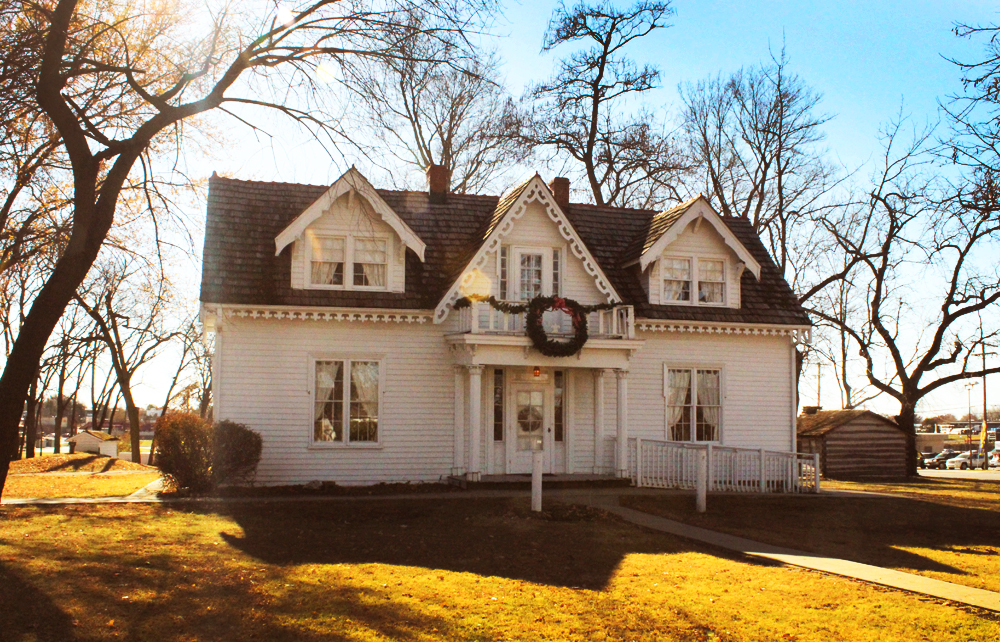
We highly recommend making time to locate this Gothic-Revival historic farmhouse. It’s in remarkably great condition, given the action it’s seen through the years.
Located in Raytown, east of Kansas City and eight miles south of Independence, the Rice – Tremonti Home was built in 1844 by Archibald Rice right on Santa Fe Trail. It quickly became a popular camping site for travelers of the Oregon and California Trails as well.
Archibald was a genius businessman who initially moved from North Carolina to Howard County, Missouri at the beginning of the SFT, saw what was happening with fortunes made in trade and the growing number of people headed west, then relocated to Independence, Missouri — the main trail hub for buying wagons and loading them up. After successfully farming and selling corn to the wagon trains, he bought the land in Raytown and used the same business model — sold corn at $1.25 per bushel, hogs, bacon, provisions, some cattle, and possibly charged a fee to camp on his property.
As you stand in the front yard, you can imagine the thousands of families and wagons that came rolling through the grounds. Notable pioneers who passed through are countless (not documented but most likely) including the Donner Party.
The once wide open 160 acre farm expanded to 1500 acres and today is a busy, populated residential neighborhood of homes and businesses.
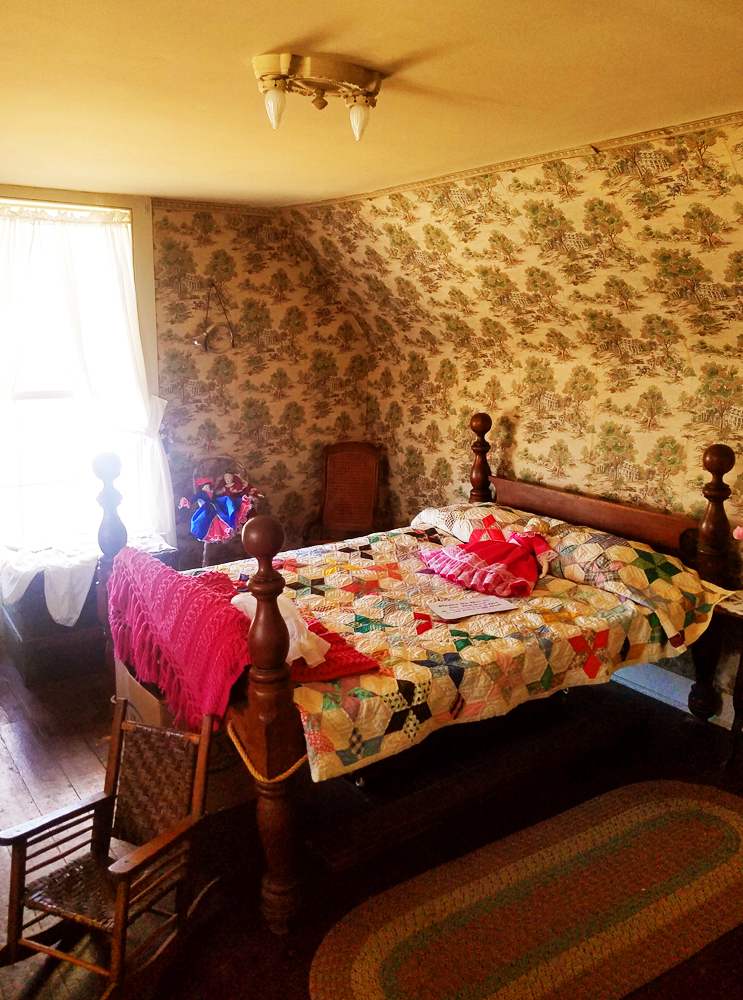
The curators have made an excellent effort in furnishing the house with antiques and artifacts that the Rice family and SFT travelers would have used in their daily lives. The decor is not ornate, as this was a working farmhouse, not a plantation mansion.
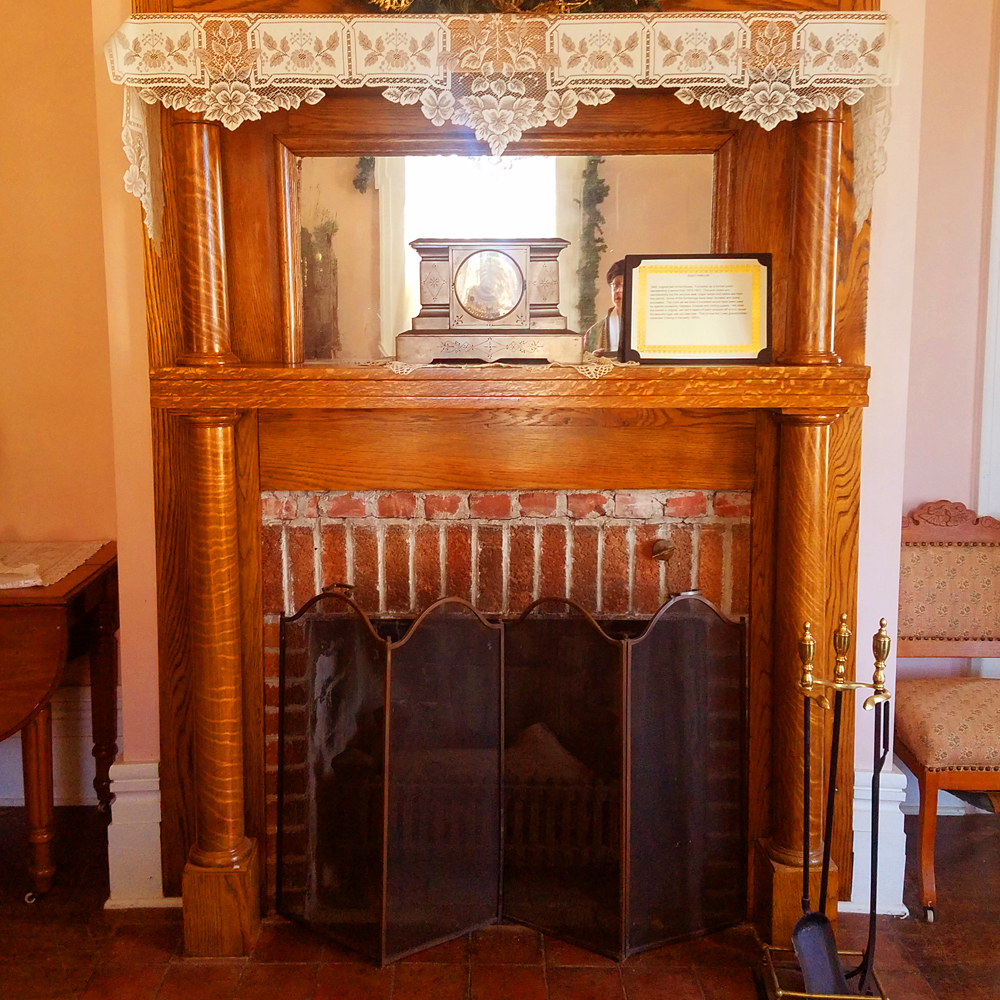
In the downstairs parlor stands the fireplace with original tiger wood mantle. To the left is an original walnut table of the home. We are big fans of standing in front of original fireplaces and imagining all of the people who stood in that very spot through the years, smoking stogies, sipping whiskey, talking about current events and their travels.
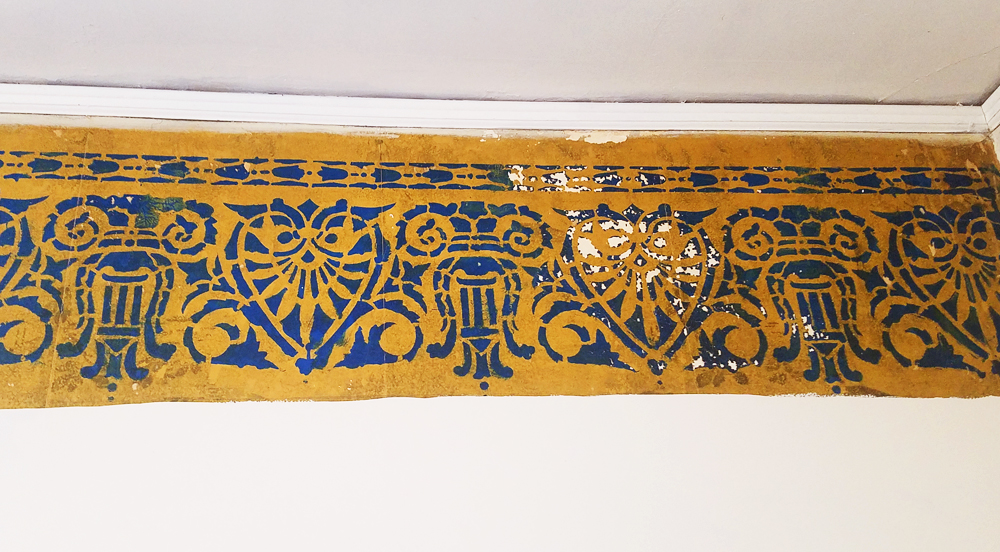
Stenciled wallpaper borders.
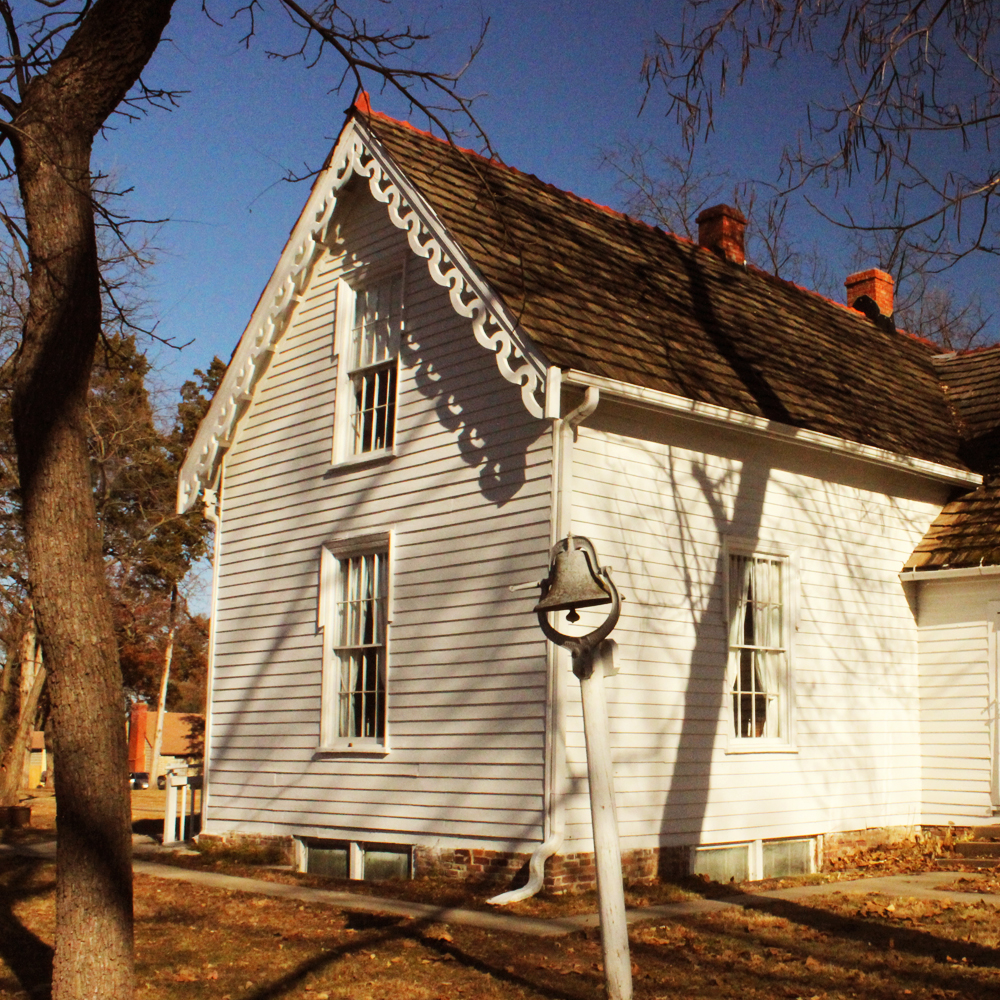
This home has seen action from the 1849 Gold Rush, and as the Rice family were slave owners and Southern sympathizers, they fled in 1861 to Texas during the Civil War. Five years later they returned and the house was still standing. Why it wasn’t burnt to the ground, no-one knows, as so many were during this time. It is thought to have been a field hospital or officer’s quarters but there is no documentation to confirm at this time.
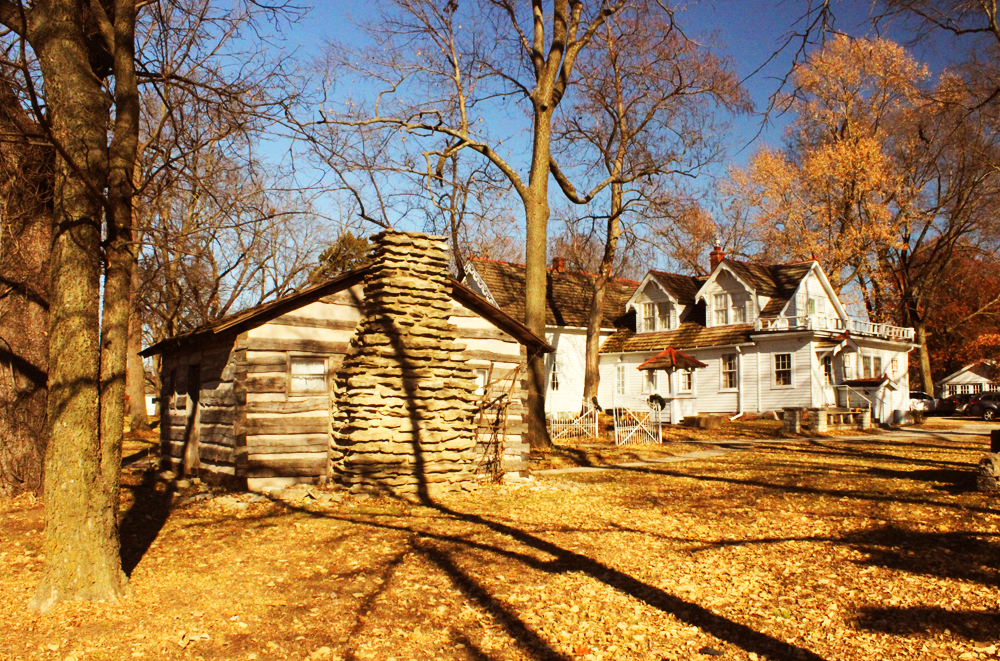
Archibald Rice died in 1849 and the estate passed on to his son Elihu Coffee Rice whose wife Kitty brought three slaves with her, one of whom was Sophie White who had raised Kitty since she was an infant.
The preservation of Sophie’s cabin, a replica on the exact spot of her original cabin positioned not far from the main house, is of equal importance to the upkeep of the Rice home, as it is a visual reminder for future generations that slave owners did exist in our history, and also to celebrate Sophie who was a remarkable woman.
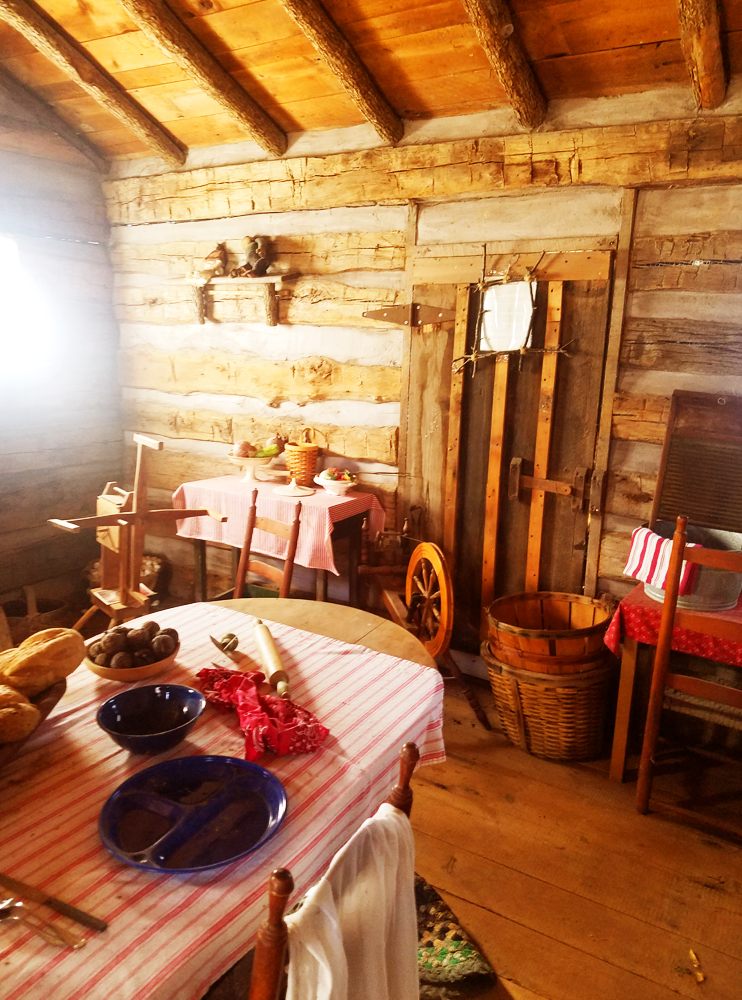
Sophie preferred to cook all of the family meals in the cabin and carry them into the main house for serving. She was with the Rice family in Texas and returned with them to Raytown. Sophie was freed in 1863 by the Emancipation Proclamation and remained with the family until her death.
By the end of her life, she had saved enough money from working with livestock, making and selling dried apples and other foods to purchase a burial plot at Woodlawn Cemetery in Independence, Missouri. The city gave her a marked grave in 2003 and she is remembered as a respected and industrious woman.
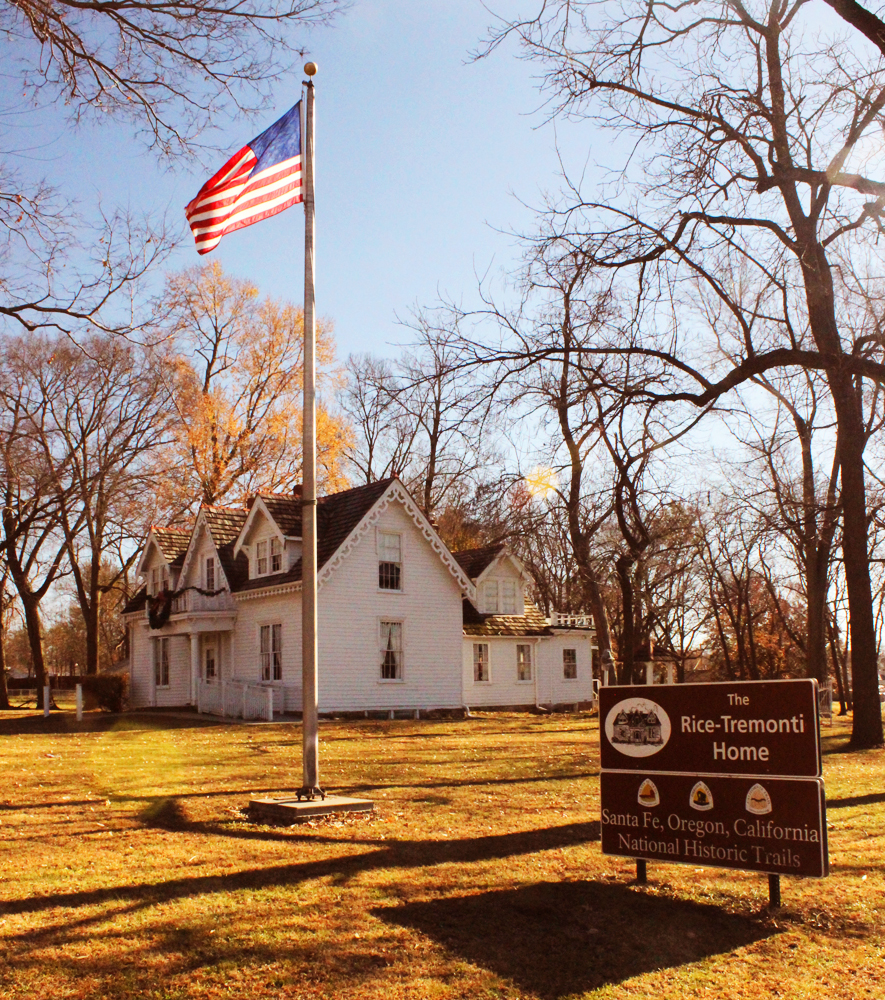
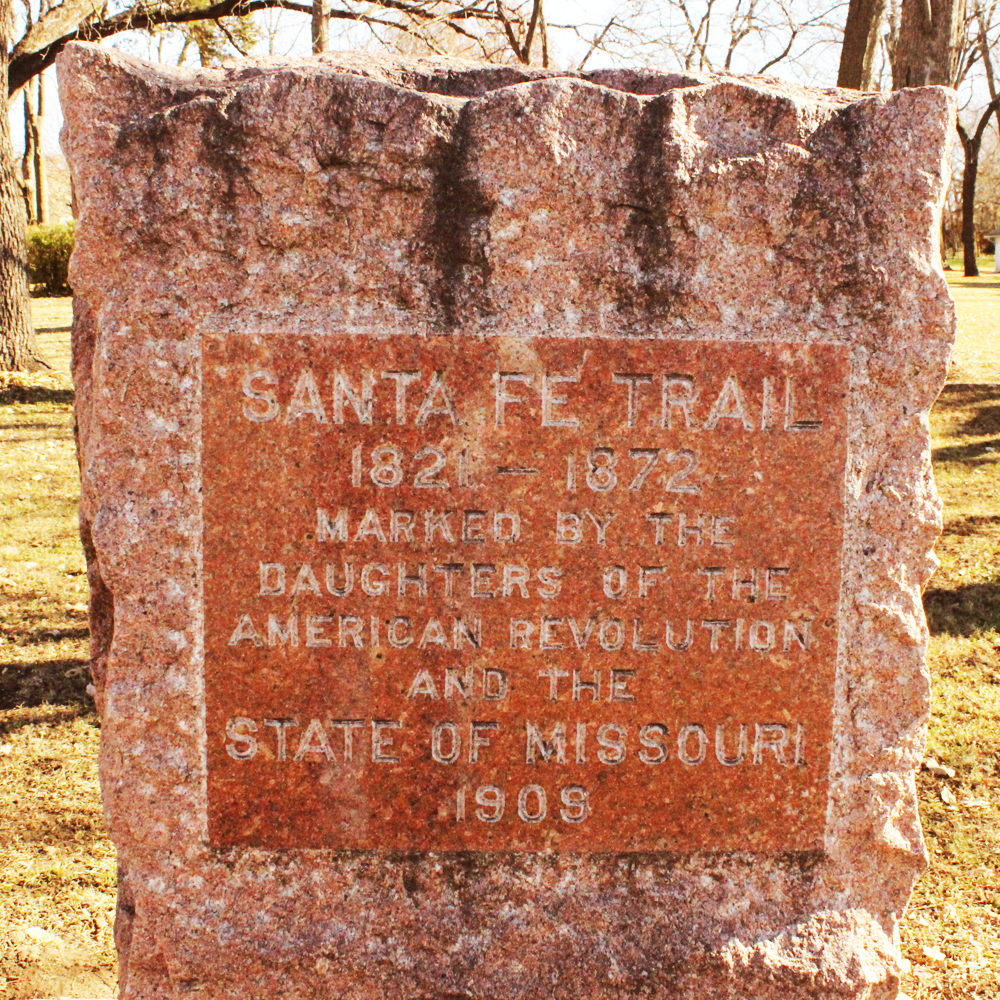
In the early 1900s, the home was sold to the Lowe family. Judge Lowe was a founder of the National Old Trails Association, and this red granite Santa Fe Trail marker was dedicated in 1913.
In 1929 the home was purchased by Dr. Louis Tremonti and his wife Gloria. Dr. Tremonti’s practice was located in the west parlor of the home. Gloria resided there until 1987, at which point the home had deteriorated and underwent an extensive restoration by the Friends of the Rice-Tremonti Home Association.
The house is not only a historic landmark but is also rented for weddings, parties and events. If you are able to call in advance, they will make every effort to arrange a tour for you, as the house and cabin currently do not have regular visiting hours. Also, be sure to ask if there is a fee or suggested donation. Here is the number for historian Leigh Elmore who can help with tours: 816-510-8179.
The property is a city park and the grounds are open year round from dawn to dusk.
As you leave the house and drive down the street through the neighborhood, look for SFT signs as you’ll be driving directly on it.
Many thanks to our friends at the Official Santa Fe Trail Association, V.P. Larry Short and historian / writer Leigh Elmore for our special tour.
Wishing you Happy Trails!
Amy & Mr. D

6 comments
Just fascinating — thanks! And such a beautiful picture of the orange-tinted sky in the newsletter. xo
MS. M, thank you so much. We always love to hear from you!
Glad you’re back on the trail. I am enjoying these posts and inspired to veer off I-70 to discover many of these sites with my kids over the summer break. The maps and resource links are very helpful and we have family nights plotting out our journey. Thank you for sharing this, we also thought it was an old cattle trail.
Frank, you and your kiddos are in for the trip of a lifetime. And we, too, can’t imagine taking I-70 with the trail so close by. Each trip brings new discoveries.
Each time I read one of your Santa Fe Trail articles I am amazed that these places are still standing and am so thankful for the people who preserve the trail’s history. Kudos to them!
Natalie, we are also grateful to the people who preserve our history. If you’d like to join the trail association here is their website: https://santafetrail.org/. They have a fantastic quarterly newsletter and membership dues go to the preservation of the SFT.